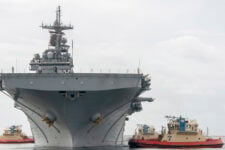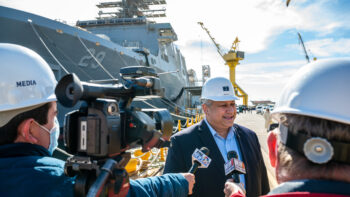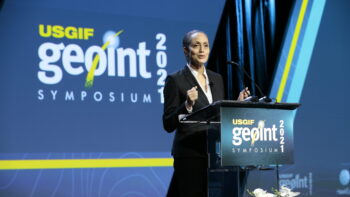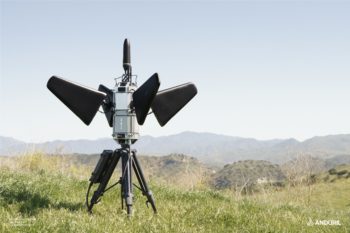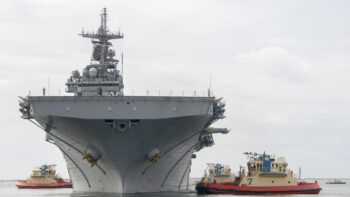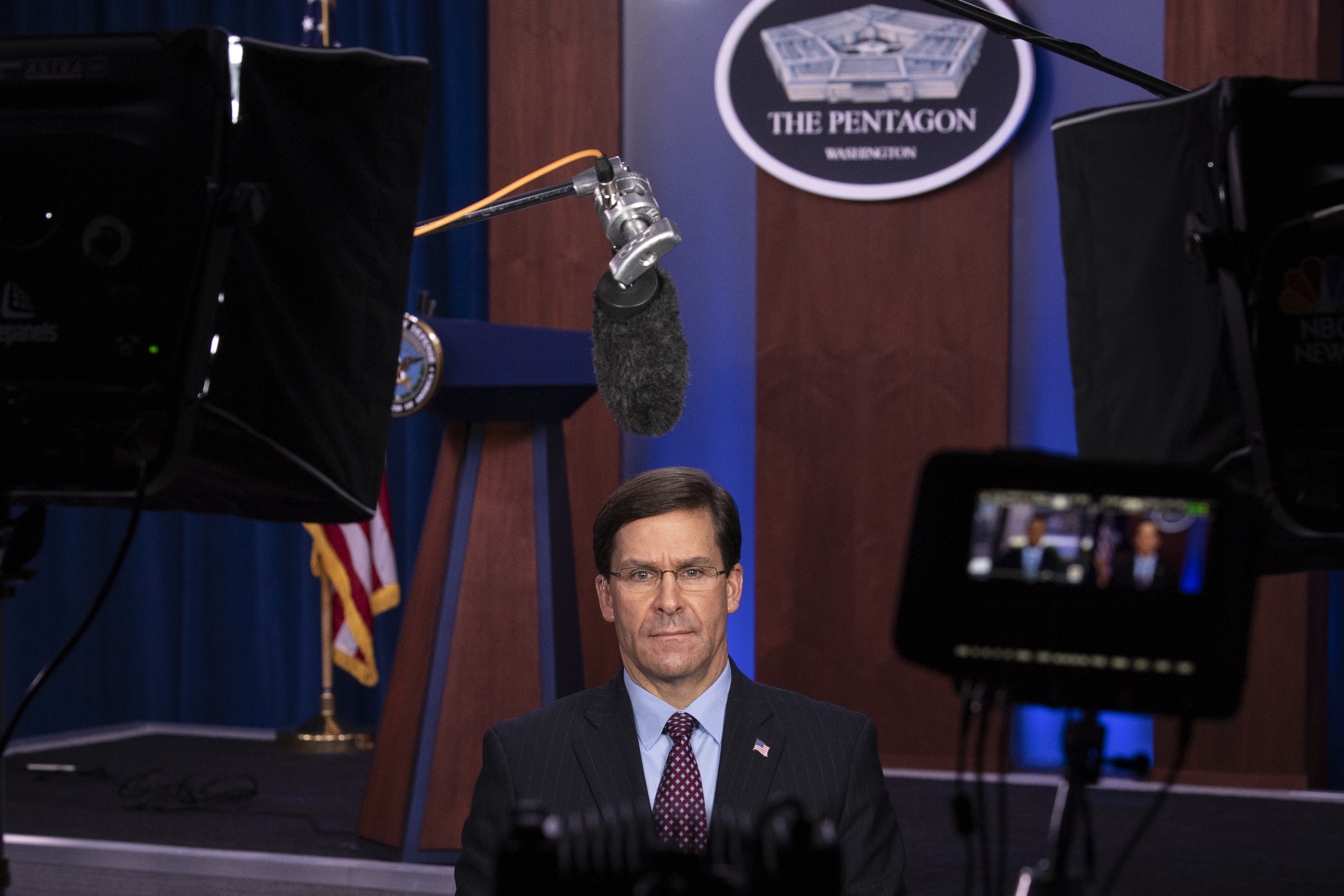
Secretary of Defense Mark Esper interviewed by NBC’s TODAY Show in the Pentagon Briefing Room
WASHINGTON: Defense Secretary Mark Esper offered details today of his eagerly anticipated plan to reshape the Navy, offering a vision that includes backing away from supercarriers, adding submarines, and calling for a massive shift to smaller, faster, and unmanned ships.
The secretary called for a fleet of more than 500 ships by 2045 — promising 355 of those by 2035 — a building boom that would require Congress to pump more money into the service’s shipbuilding account, while potentially scuttling current hulls to make way,
The broad outlines of his “Battle Force 2045” plan were delivered without a price tag, and will have to survive a presidential election, a potential power shift in the Senate, and the desires of Capitol HIll, which pays close attention to jobs at shipyards. The plan, which will be briefed in coming weeks by Navy officials, comes after eight months of study and wargaming at the highest levels of the Pentagon to rethink the fleet’s size and shape.
The biggest suggested changes would occur within both the Navy’s most expensive, and potentially least expensive, programs. Esper said the service would likely float somewhere between 8 to 11 nuclear powered carriers, with up to six light carriers similar to the America-class amphibious ships, joining them.
The 11 carrier fleet is a matter of law, and would require an act of Congress to allow the Navy to downshift, a move likely to be opposed by the shipbuilding industry and some powerful members of Congress.
Conversely, Esper called for new classes of unmanned ships that could comprise almost half of the entire fleet, or somewhere between 140 and 240 yet to be designed ships.
The unmanned ships will have “the potential to perform a wide range of missions from resupply and surveillance, to minelaying and missile strikes,” Esper said. “They will add significant offensive and defensive capabilities typically at an affordable cost in terms of both sailors and dollars.”
A key recommendation is to build a larger and more deadly attack submarine fleet of as many as 80 SSNs. “If we do nothing else, the Navy must begin building three Virginia-class submarines a year as soon as possible,” Esper said.
Esper suggested the Navy needs to refuel the nuclear reactors of a total of seven Los Angeles-class subs, compared to the five the Navy had recommended. “The study reached a clear consensus on the need to rapidly increase the number of attack submarines — the most survivable strike platform in a future great power conflict,” he said.
As Breaking D readers know, a recent report from the Hudson Institute, which Esper asked to provide an outside vision of what the future fleet should look like, previewed much of what Esper said today. The report advocated a 581-ship fleet — including 139 unmanned surface and subsurface vessels — by 2045. The team also advocates cutting the carrier fleet from 11 to nine, while adding 27 new Light Amphibious warships for the Marine Corps, and 80 small corvettes.
That’s broadly in line with the 70 small surface combatants Esper called for today, which would include the new class of frigates, along with LCS. The Littoral Combat Ship will be replaced by the frigate, large unmanned ships, and potentially a corvette.
Esper also said he supports the Marine Corps vision to get smaller, and more tightly integrated with the fleet. Last month, Commandant Gen. David Berger said the shipbuilding plan includes ships the Corps has wanted to add to the fleet, including “new classes of ships that the Marine Corps must have, they’re in the plan. Same with logistic ships,”
The new ships the Corps wants — which the Navy Department will have to pay for — include a Light Amphibious Warship and a Medium Logistics Ship that will transport and support small, dispersed groups of Marines working on ad hoc bases far afield from the fleet.
Chief of Naval Operations Adm. Mike Gilday is expected to offer more detail on the plan next week during a scheduled talk with Defense One, filling in some of the blanks left by Esper.
After Esper’s presentation, Naval War College professor Jonathan Caverley tweeted that the difference between eight and 11 carriers “represents a $30-35 billion budget swing…before you buy the air wing. An 8 CVN fleet would operate completely differently than one with 11. That number also determines the rest of the fleet makeup. No firm CVN number, no fleet architecture.”
Speaking in person at CSBA in Washington — he wore a mask before and after his comments — Esper appeared a day after President Trump dramatically returned to the White House after leaving Walter Reed Medical Center where he was treated for his COVID symptoms, and hours after six of the seven Joint Chiefs of Staff were forced to self-quarantine after being exposed to the virus.
Defense companies keep up momentum on share repurchases, despite Navy leader’s criticism
Capital Alpha Partners found that buy back amounts at defense contractors were higher this financial quarter for all but only four others since March 2011.





